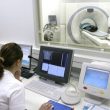The presence of cardiogenic shock (CS) in a setting of aortic stenosis ranges from 1% to 4%. The prognosis for this scenario is ominous due to subendocardial ischemia, which presents as a decrease in ventricular preload and an increase in afterload. Aortic valvuloplasty has been used in this context, but, unfortunately, it has been associated<a href="https://solaci.org/en/2023/11/09/is-tavr-beneficial-in-cardiogenic-shock/" title="Read more" >...</a>
TCT 2023 The LIFE-BTK Trial
This was a randomized study including 261 patients treated with infrapatellar percutaneous transluminal angioplasty.173 of these patients received an everolimus bioresorbable scaffold while the remaining 88 were treated with balloon angioplasty. The efficacy primary end point was limb salvage and primary patency rates at 12 months and the safety primary end point was freedom from<a href="https://solaci.org/en/2023/10/30/tct-2023-the-life-btk-trial-2/" title="Read more" >...</a>
Ultrathin Stents Shown Safe and Effective in Real World Patients
Ultrathin drug eluting stents (60 µm) had been shown beneficial vs. thin-strut stents in terms of target lesion failure (TLF) at 2, 3 and 5 years in randomized studies, but they had not been yet assessed in “real world” patients. The BIOFLOW VII is a prospective, multicenter study including 556 “real world”patients with a total<a href="https://solaci.org/en/2023/10/19/ultrathin-stents-shown-safe-and-effective-in-real-world-patients/" title="Read more" >...</a>
Treatment and Gender-Based Outcomes for Coronary Bifurcation Stent Placement: Report from the e-ULTIMASTER Registry
Approximately 20% of all percutaneous coronary interventions (PCI) are performed on bifurcation lesions, which continue to pose a challenge in terms of strategy: how many stents to use, what is the most suitable strategy, and when to transition from a single stent to two during the procedure. Additionally, the use of two stents in these<a href="https://solaci.org/en/2023/10/06/treatment-and-gender-based-outcomes-for-coronary-bifurcation-stent-placement-report-from-the-e-ultimaster-registry/" title="Read more" >...</a>
BIFURCAT Registry: 1 or 2 Stents? Treatment of Side Branch (Medina 0.0.1) Lesions According to Real-World Data
Coronary bifurcation lesions have been a subject to debate, with different approaches by various medical teams. These lesions often carry a higher risk of ischemic events compared with lesions at non-bifurcated sites. The main strategy, supported by medical society recommendations and clinical guidelines, involves using provisional stenting with one stent to minimize the number of<a href="https://solaci.org/en/2023/10/04/bifurcat-registry-1-or-2-stents-treatment-of-side-branch-medina-0-0-1-lesions-according-to-real-world-data/" title="Read more" >...</a>
Use of Drug-Coated Balloons in De Novo Lesions in Large Coronary Vessels
Drug-coated balloon (DCB) angioplasty is emerging as a novel treatment for coronary artery disease. Studies evaluating this strategy have demonstrated clinically non-inferior outcomes compared with those of drug-eluting stent (DES) implantation in patients with in-stent restenosis and de novo disease in small vessels. However, evidence for the use of DCBs in large coronary vessels is<a href="https://solaci.org/en/2023/09/28/use-of-drug-coated-balloons-in-de-novo-lesions-in-large-coronary-vessels/" title="Read more" >...</a>
OCT-Guided PCTA: Does It Offer any Benefits?
For many years, percutaneous transluminal coronary angioplasty (PCTA) has expanded significantly worldwide. However, despite the demonstrated advantages of intravascular ultrasound (IVUS) in terms of minimal luminal area, reduced cardiovascular events, and restenosis, its use is not very common due to various reasons. On the other hand, optical coherence tomography (OCT) offers even higher resolution than<a href="https://solaci.org/en/2023/09/12/oct-guided-pcta-does-it-offer-any-benefits/" title="Read more" >...</a>
What to Do in Cases of AMI with Multivessel Disease
The presence of lesions in multiple vessels is common in ST-segment elevation myocardial infarction (STEMI). It has been shown that, when they are treated in a second procedure, patients have a better outcome. To date, there is limited information available on percutaneous transluminal coronary angioplasty (PTCA) in vessels with severe non-culprit lesions during primary angioplasty.<a href="https://solaci.org/en/2023/09/12/what-to-do-in-cases-of-ami-with-multivessel-disease/" title="Read more" >...</a>
ESC 2023 | OCTIVUS TRIAL: Is OCT Superior?
Researchers conducted a multicenter randomized study involving 2008 patients undergoing coronary angioplasty (PCI). In this group, 1005 patients underwent a procedure guided by OCT, and 1003 patients by IVUS. The average age of participants was 65 years, 21% of subjects were women, and there were no significant differences between both groups. The primary endpoint was<a href="https://solaci.org/en/2023/09/01/esc-2023-octivus-trial-is-oct-superior/" title="Read more" >...</a>
ESC 2023 | OCTOBER TRIAL: Should We Begin to Consider OCT for Bifurcation Lesions?
The OCTOBER Study randomized 1201 patients with bifurcation lesions in a 1:1 ratio to undergo percutaneous transluminal coronary angioplasty (PTCA) guided by optical coherence tomography (OCT) or by angiography. The primary endpoint (PEP) was major adverse cardiovascular events (MACE) over a 2-year period. Group characteristics were similar. The average patient age was 66 years, most<a href="https://solaci.org/en/2023/08/29/esc-2023-october-trial-should-we-begin-to-consider-oct-for-bifurcation-lesions/" title="Read more" >...</a>








